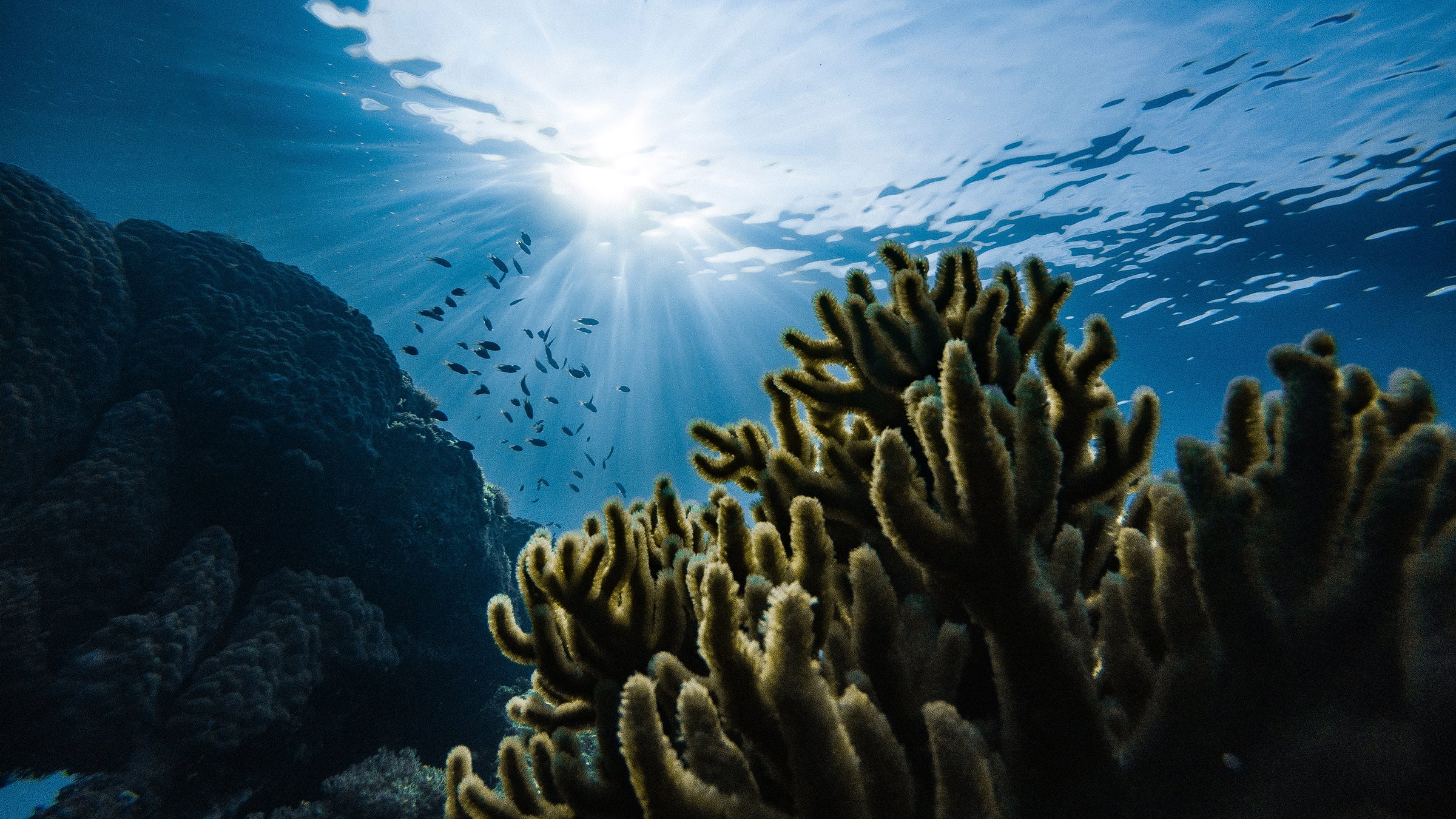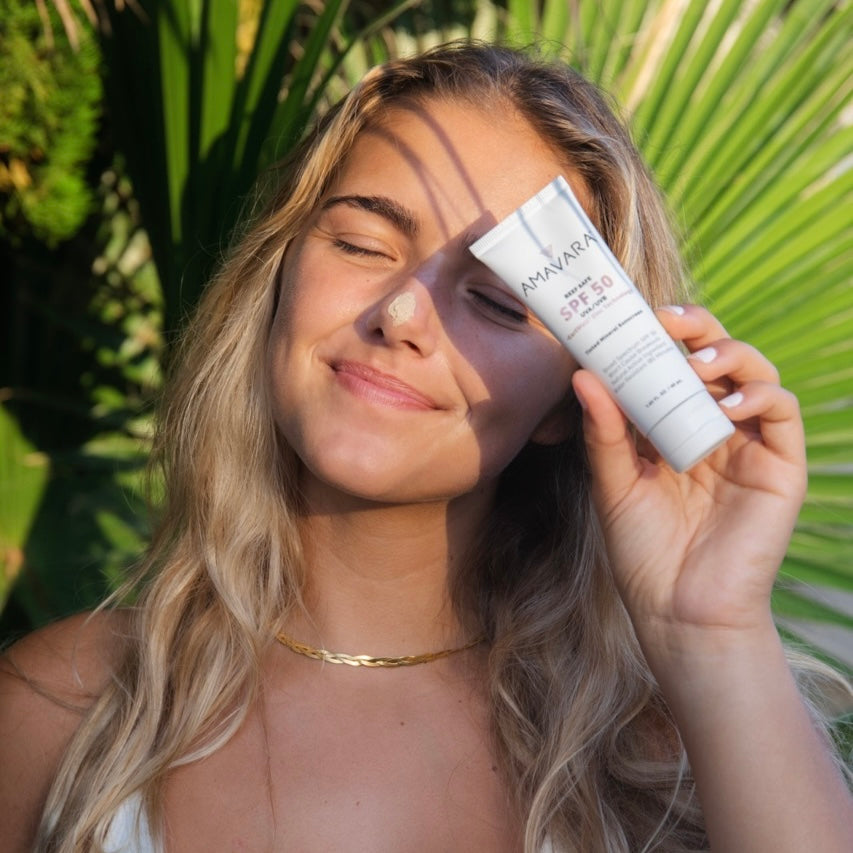The scenario
If you have little ones, you are likely familiar with the daily sunscreen battle. Running after your kids, sunscreen bottle in hand as they make a beeline for the water or their group of friends playing in the sun. When you manage to catch up with them, the sunscreen wailing might ensure. Complaints like “it stings my eyes,” “I don’t want to wait 30 minutes before I get in the water,” and “this feels sticky and smells” echo around you.
Why do I do this again?
It's essential. We are all aware of the importance of sun protection. Being a kid means playing outside most of the day and the majority of skin damage often comes from childhood. How much harm can a bad sunburn you got as a kid really be? The truth is, “ultraviolet radiation, which is present in sunlight, causes DNA damage and genetic mutations, making it a major catalyst for skin cancer. About 95 percent of cases of melanoma, the most aggressive and deadly kind of skin cancer, are attributable to UV-ray exposure. Skin cancer is the most common type of cancer in fair-skinned populations, and the incidence and mortality rates of it are increasing. About one in five Americans will develop skin cancer during their lifetime” (Keppler, 2018). We’ve heard it before, but sometimes it’s good to remember why you feel the need to slather your kids with sun protection. Designed to protect your kids, you may have read that some sunscreens can do more harm than good. That can add yet another layer of stress as you hold down your squirming child, “Is this even safe to put on their skin? What’s worse? Skin damage or the long term effects of toxic chemicals?” Finding the right sunscreen product for your family is important to ease the stress of this routine.
1) Safer ingredients
Babies and kids have thinner skin and it absorbs more per unit of body weight than an adult, (Agency for Toxic Substances and Disease Registry, 2016). This is why it’s so important to be certain that whatever goes on their skin is uses the cleanest ingredients available. Choose a mineral sunscreen. Dive into CHEMICAL VS. MINERAL SUNSCREEN: THE FUNDAMENTAL DIFFERENCE, to understand the difference between a chemical and mineral sunscreen.
Studies have connected common sunscreen ingredients to hormone disruption (especially in children), birth defects (when pregnant mothers are exposed), and infertility. There are only two active ingredients considered safe and effective for sunscreen use by the FDA - Titanium Dioxide and Zinc Oxide. Check your labels. Look at the “active ingredients.” The 8 harmful chemical UV absorbers used widely throughout the sunscreen industry to avoid include, Oxybenzone, Octinoxate, Octocrylene, PABA (Aminobenzoic Acid), Enzacamene, Octisalate, Homosalate, and Avobenzone. All are to be avoided, but Oxybenzone and Octinoxate should be at the top of your sunscreen chemicals to avoid list. They act as endocrine disrupters linked to reproductive issues, and were found to cause the most significant damage for those under the age of two.
2) Sensitive skin
Kids are prone to all kinds of skin sensitivities, from summer rashes to eczema and allergies. Choose a sunscreen that is safe for the entire family and babies at six months old. Mineral sunscreens are often the most gentle sunscreens. They are less likely to clog pores and irritate complexions, also making them ideal for acne-prone skin. Zinc oxide (the main ingredient in many mineral sunscreens) is hypoallergenic, and can be produced as a lightweight formula, that provides conditioning to moisturize the skin. Zinc actually helps calm irritation (it’s the primary ingredient in most diaper rash creams), and is also ideal for those that suffer from rosacea and redness. It deflects heat away from the skin rather than absorb it, like a chemical sunscreen would. Look for sunscreens with FDA ratings of 80 minutes water and sweat resistance. A good sunscreen should maintain effective protection for several hours in extreme conditions.When kids are active, or playing
3) Sensory issues
Make it a ritual. Instill in your kids that applying sunscreen should be like brushing your teeth. If you have kids with sensory issues, daily sunscreen application can be a tough habit to instill. Try a facestick - kids who hate lotions will sometimes tolerate a facestick. Eco Child’s Play named Amavara SPF 50 Facestick the best sunscreen for children with sensory issues. “If you have never tried a stick version of sunscreen, I highly recommend it, especially if you have a child with sensory issues. My son hates lotions but will tolerate a facestick sunscreen” (Eco Child’s Play, 2020). A facestick can be tossed in a bag or even pocket making reapplication easy to do on the go. Look for a zinc oxide mineral formula that will not leave a thick, pasty white residue. The technology today allows for zinc oxide formulations to be blended transparently in the skin, with a dry, matte finish without stickiness or oiliness.
4) Eco friendly
Use the sunscreen ritual as a teaching opportunity. Kids can be taught to understand we have a responsibility to protect the earth they get to play on. Inform them about the importance of using reef safe and eco friendly products. While no brand can be truly sustainable, there are many that make an effort to reduce their footprint. If you’re concerned about non toxic ingredients, human and environmentally safe usually go hand in hand. Rest assured that a product dedicated to conserving the reefs will have the same commitment to the safety of its customers. A reef-safe sunscreen should use non nano zinc oxide. Non nano particles are too large to be absorbed by the skin and enter the bloodstream, making even this safe mineral unable to enter your pores or disrupt aquatic life. Dive into REEF SAFE VS REEF FRIENDLY to learn more about the real meaning behind a “reef friendly” label and how they are often not all that friendly. It’s as simple as letting kids know that the turtles, dolphins and fish are hurt by certain sunscreens. Before you know it they will be holding you accountable and holding up your products asking “if these are safe for the fish too.”
To wrap up
Everyone needs sun protection. We become a little more cautious and a little bit more curious about what we put on the body when it comes to kids. If you’re committed to choosing the best sunscreen available, a mineral protection made with non nano zinc oxide is the safest, most effective and highest quality choice. You are the role model. An SPF that makes you happy will show your kids that sunscreen application is a necessary habit practiced by all.
If you’re ready to dive into the summer armed with an SPF you and your kids can get behind, look at AMAVARA. Co - founded by a native San Diegan, a father of five outdoor sports enthusiast children was unsatisfied with the performance and ingredients of most products on the market. He created AMAVARA, a sunblock that uses reef safe technology, has clean beauty standards, the aesthetics of a skincare line, and was designed with the active and outdoor family in mind. Protect what you love.
Works referenced:
https://www.vice.com/en_us/article/xw7djj/how-screwed-am-i-from-bad-sunburns-i-got-as-a-kid
https://ecochildsplay.com/2020/05/16/its-eco-friendly-sunscreen-time-amavara-review/
https://www.atsdr.cdc.gov/csem/csem.asp?csem=27&po=9




